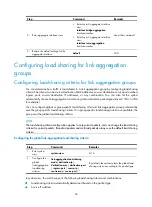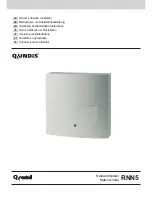
62
Basic concepts in STP
Root bridge
A tree network must have a root bridge. The entire network contains only one root bridge. The other
bridges in the network are called "leaf nodes." The root bridge is not permanent, but can change with
changes of the network topology.
Upon initialization of a network, each device generates and periodically sends configuration BPDUs with
itself as the root bridge. After network convergence, only the root bridge generates and periodically
sends configuration BPDUs, and the other devices forward the BPDUs.
Root port
On a non-root bridge, the port nearest to the root bridge is the root port. The root port communicates with
the root bridge. Each non-root bridge has only one root port. The root bridge has no root port.
Designated bridge and designated port
Table 8
Description of designated bridges and designated ports
Classification
Designated bridge
Designated port
For a device
Device directly connected with the local
device and responsible for forwarding
BPDUs to the local device
Port through which the designated bridge
forwards BPDUs to this device
For a LAN
Device responsible for forwarding BPDUs
to this LAN segment
Port through which the designated bridge
forwards BPDUs to this LAN segment
As shown in
, Device B and Device C are directly connected to a LAN. If Device A forwards
BPDUs to Device B through port A1, the designated bridge for Device B is Device A, and the designated
port of Device B is port A1 on Device A. If Device B forwards BPDUs to the LAN, the designated bridge
for the LAN is Device B, and the designated port for the LAN is port B2 on Device B.
Figure 19
Designated bridges and designated ports
Path cost
Path cost is a reference value used for link selection in STP. STP calculates path costs to select the most
robust links and block redundant links that are less robust, to prune the network into a loop-free tree.
















































